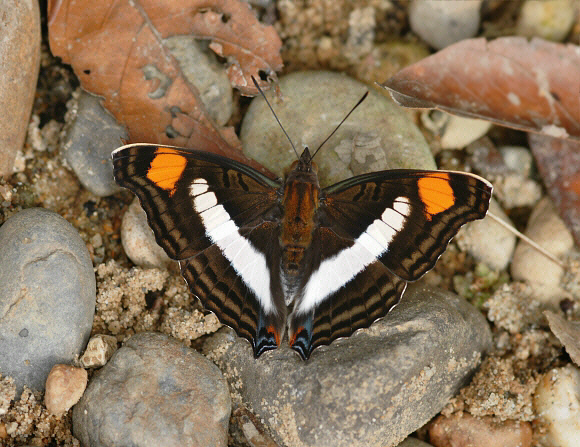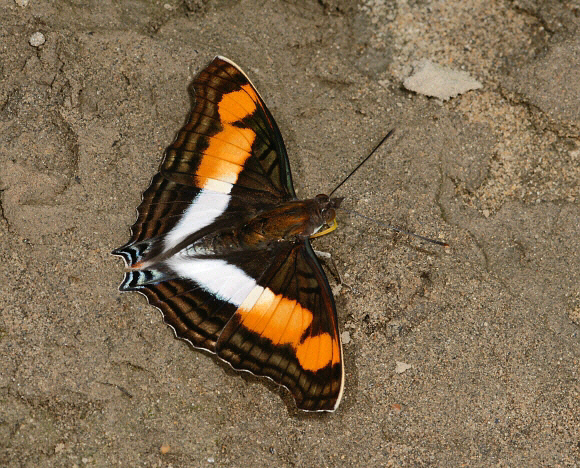
Introduction
There are 15 Doxocopa species, all confined to Central and South America. Almost all Doxocopa species exhibit pronounced sexual dimorphism. Males of some species have a highly reflective purple or turquoise iridescence overlaid on an Adelpha-like pattern of broad orange and white bands. The females of this group are patterned like Perisama. In other species such as linda, both sexes resemble Adelpha, but can be easily distinguished from them by the more angular wing shape of Doxocopa.
Doxocopa linda linda produces 2 morphs. In the normal form the orange sub-apical patch is joined to a broad orange post-median bar. In form selina the median bar is white, and separated from the sub-apical patch. Doxocopa linda produces 5 subspecies, found variously from Costa Rica to Bolivia and Paraguay.
Habitats
The butterfly breeds in rainforest habitats at altitudes from about 200-1200 metres.
Lifecycle
The caterpillar feeds on Celtis species ( Ulmaceae ). When fully grown it is green, strongly tapered towards the anal segment, and has a pair of forward-projecting horns on its head. The chrysalis is probably similar to that of other Apaturines, which are typically flattened laterally, arched dorsally, and superbly camouflaged as living or dead foliage.
Adult behaviour
Males are strongly territorial. They perch on high foliage, and periodically swoop down with great speed and agility to investigate rotting fruit, dung or carrion on the ground. They also commonly visit wet muddy patches and the edges of small streams. The butterflies are solitary and nervous, but after a few minutes will usually accept human presence.

